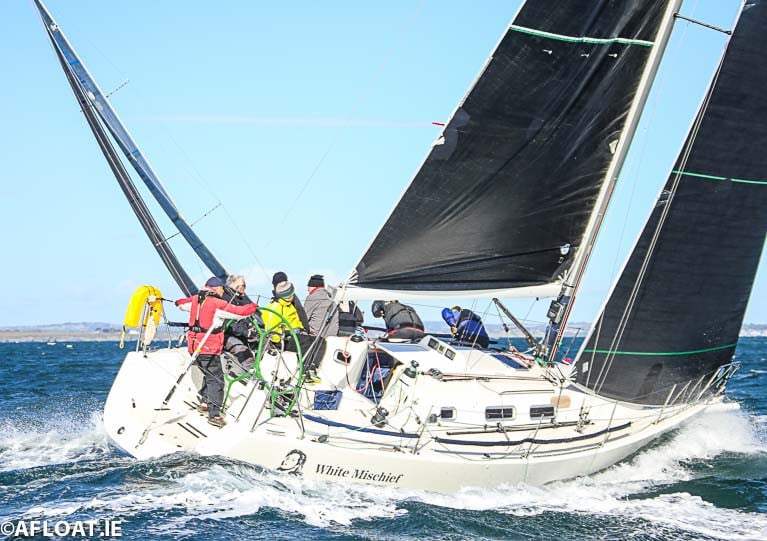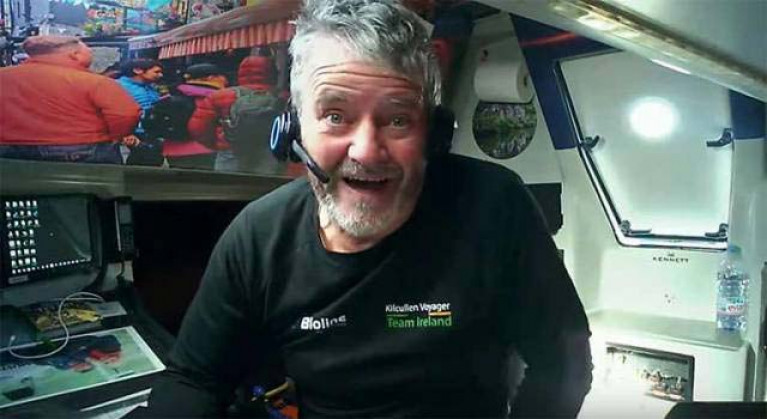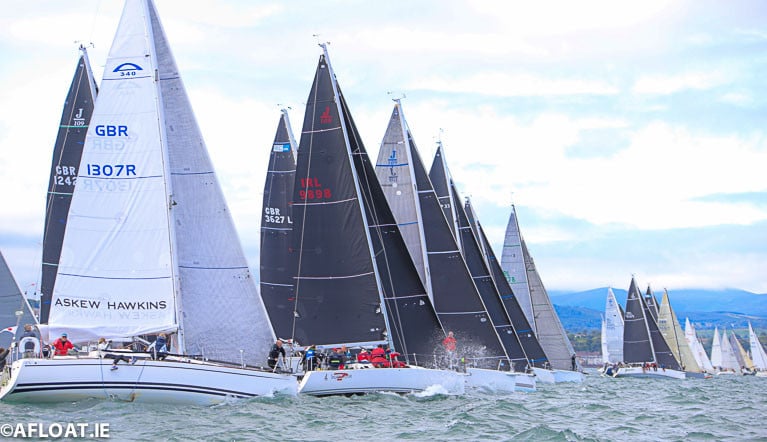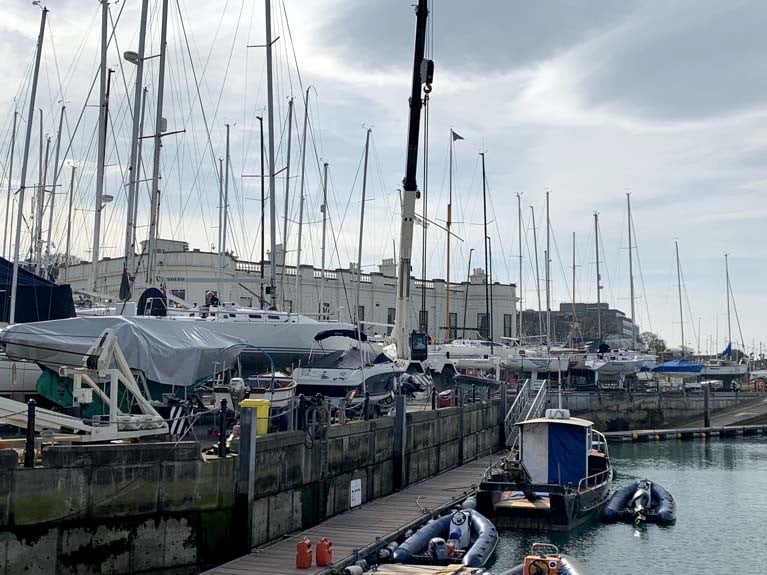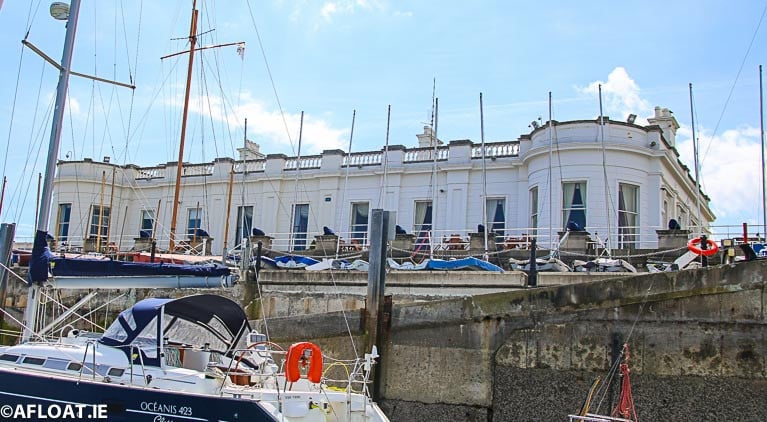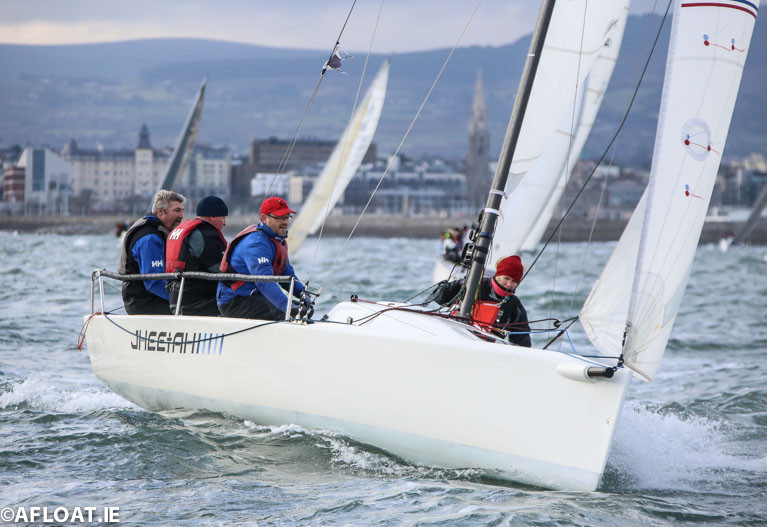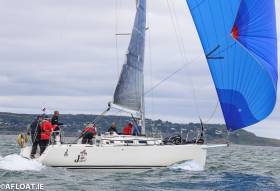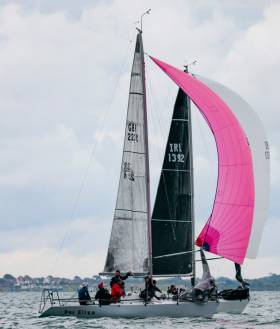Displaying items by tag: Royal Irish Yacht Club
Royal Irish Yacht Club's Christmas Market 2020
Royal Irish Yacht Club members in Dun Laoghaire Harbour can look forward to a 'Christmas Wrapped', the club's 2020 Christmas Market subject to the relevant COVID restrictions next month.
The Market aims to run on 6th, 13th and 20th December and will feature beautiful, hand-crafted gifts, artisan foods, wines. Santa Claus will also be in the Club.
Subject to pre-booking members can look forward to complimentary hot chocolate and mulled wine on arrival before entering the Christmas Wrapped experience featuring a range of specially curated gifts including Irish designed silks, ceramics, pampering botanicals and candles, flowers, foodie delights and much more.
The Club will have its own selection of Club wines, hampers, vouchers and gift ideas. Full details can be found here
When open, RIYC will be trading under the current Covid restrictions at that time. Face coverings, social distancing, pre-booking and reduced visitor numbers will all be observed.
Royal Irish Yachts Share the Spoils of Dublin Bay Sailing Club Season
The Royal Irish Yacht Club (RIYC) took the lion’s share of IRC prizes at the recent Dublin Bay Sailing Club (DBSC) prizegiving for the 2020 AIB sponsored season with wins in Cruisers Zero, One divisions and two of the club's premier awards.
DBSC broke with long-established tradition this year due to COVID-19 and its popular and long-established prizegiving for 300 boats in 22 different classes was not held, but that did not stop the award of the usual glittering array of trophies as Afloat reported here.
On top of the DBSC premier award of the Dun Laoghaire Harbour Trophy for the best new yacht in 2020 won by the club's Prima Forte (Patrick Burke) there were RIYC class wins for the JPK10.80 Rockabill VI (Paul O'Higgins) who won the Martin Cup for Thursday IRC racing in IRC Zero big boat class. The Club's XP44 Wow (George Sisk) won the ECHO trophy for Saturday racing in this class and Burke's Prima Forte took the Centenary Cup for Saturday ECHO racing.
 DBSC Dun Laoghaire Harbour Trophy winner, Prima Forte
DBSC Dun Laoghaire Harbour Trophy winner, Prima Forte
The Royal Irish J109 father and son team of Tim and Richard Goodbody were Thursday IRC winners in Cruisers One, winning the West Pier Officer's Cup for Thursday racing and in Saturday ECHO racing, Paul Bradley and Fintan Cairns lifted the Osterburg Cup sailing the Mills 31 Raptor.
In Class Two, Jim McCann's Peridot, was Thursday's champion on ECHO winning the Centenary Cup and in another ECHO victory for the club, Paget McCormack's Saki won the Cruisers Three Mercia Cup for Thursday racing.
In Class Five, Charles Broadhead's Persistence was the winner of the Burford Trophy for his win in Thursdays IRC Overall Div A while Grainne O'Shea's Gung-Ho was the victor in Sats A and B IRC Overall winning the White Sail Class Trophy.
 DBSC Osterburg Cup winner, Raptor
DBSC Osterburg Cup winner, Raptor
RIYC One Designs & Dinghies
It didn't stop there for the RIYC fleet as there were some top results in the one-design divisions too. As Afloat reported previously, Jimmy Conboy Fischer sailing Billy Whizz was awarded the club's Geroge Arthur Newsom Trophy for the best result in the one-design divisions. It was the first time the top prize had been awarded to the B211s.
In the SB20s, the Lunasa Trophy for Saturday Div B was won by the club's Ger Dempsey and Chris Nolan sailing Venuesworld. Dragon racing victory on Thursday's went to Zin Zan, skippered by Adrian Masterson. In the Mixed Sports boats class, the Saturday Sportsboat Cup went to Martin Ryan's J80, Jambiya.
In the dinghy classes, Guy Kilroy's Swift was the Goldsmith Cup winner for Wednesday Racing in the Water Wag class.
Full DBSC winners here.
The Royal Irish Yacht Club in Dun Laoghaire Harbour is launching its Virtual Regatta for members this Saturday with an online presentation by RIYC's round the world sailor Enda O’Coineen.
O'Coineen, whose Vendee Globe race bid to be the first Irishman to sail the world non-stop singlehanded ended when he was dismasted off New Zealand three years ago, will demonstrate how fellow RIYC sailors can compete for the inshore eSailing championships.
The tutorial starts online 14:30 hours followed by racing 15:30hrs
It's the latest in a series of online initiatives by the RIYC using software called ZOOM, each talk is presented by a RIYC Member or invited speaker.
A new Dublin Bay regatta involving the whole Dun Laoghaire sailing waterfront has been announced for July 31st to August 3rd.
The 'Dun Laoghaire Combined Clubs Solidarity Regatta 2020' is an initiative of all five of Dun Laoghaire's yacht clubs as a response to the COVID-19 interrupted season.
"The event is a joint effort of the DMYC, RIYC, RStGYC, NYC and DBSC", according to Mark McGibney, the sailing manager of the Royal Irish Yacht Club.
We plan to run this regatta from Friday 31st July to the 3rd August.
In these uncertain times, the clubs have also decided to 'book' the weekend of the 5th/6th September as reserve dates if the August dates fall through.
More details as we have them.
Read also: 2020 Irish Sailing Fixtures (The Beyond COVID-19 Version)
Royal Irish Yacht Club Postpones Annual Lift-In of Boats
The annual lift in of boats at the Royal Irish Yacht Club scheduled for April 1, that includes the biggest cruiser-racer fleet for next month's start of the Dublin Bay Sailing Club Summer racing series, has been postponed.
The lift-in is postponed pending confirmation of a new date.
In a message to members, the RIYC said that "following the Government’s announcement of mandatory measures, the boathouse is closed with immediate effect and services are suspended for the foreseeable future. We would also ask that you refrain from working on your boats at this time until further notice".
Dun Laoghaire Marina, where many of the yachts are moored, has also closed its doors to berth holders following the Government announcement.
Royal Irish Yacht Club Lift in of Yachts Planned for April 1st
The Royal Irish Yacht Club will be launching boats in less than a fortnight for the summer sailing season at Dun Laoghaire on Dublin Bay.
Details of the annual lift-in are contained in a bulletin to members that sets out arrangements for access to boats while the clubhouse is closed due to Coronavirus outbreak measures.
The RIYC boathouse is manned daily, 7 days a week 0930 -1730 hrs.
Crane services are also currently operational Monday to Friday 0930-1730 hrs.
As Afloat previously reported, the National Yacht Club lift-in is planned ten days later on April 11th, two weeks before the first DBSC races of summer season 2020.
Royal Irish Yacht Club to Stage 'Dun Laoghaire Cup', Ireland's Only 'Dedicated Sportsboat Event'
Ireland's only event 'dedicated to sportsboats', the Royal Irish Yacht Club will stage the inaugural 'Dun Laoghaire Cup' for six classes on May 16-17 as David O'Brien writes in this morning's Irish Times here.
The event incorporates the 1720 East Coast Championship, the SB20 East Coast Championship and the Beneteau First 21 National Championships. There will also be starts for the Dragons, J80 and J70 classes.
Up to six races will be sailed over Windward-Leeward and/or Trapezoid courses.
Download the Notice of Race below. Read more in the Irish Times here.
The host club's Joker 2 skippered by John Maybury leads the J109 National Championships after the first three races sailed from the Royal Irish Yacht Club today.
Racing in southerly winds gusting to 20-knots, poor visibility on Dublin Bay kept crews on their toes in the ten-boat fleet.
Second overall, and with a first race victory, is Pat Kelly's Storm II from Howth Yacht Club on seven points. Third, on the same points as Kelly is Maybury's clubmate Andrew Craig, the Scottish Series champion sailing Chimaera.
Maybury who sailed to his fourth consecutive ICRA national title back in June on the same race track looks set on adding the J109 national title too, winning two of today's three windward-leeward races.
But expect Storm to put up a fight in the second half of the championship tomorrow as Storms' tactician is Rob O'Leary, who was tactician on Andrew Algeo's "Juggerknot I" last year when they won both East Coast and National Championships.
Maybury has a new tactician this weekend with champion team racer Nicky Smyth replacing Cork Harbour Olympian Killian Collins.
Ryan Glynn, the current J24 National Champion, is tactician on Craig's "Chimaera", where the nucleus of his Scottish Series-winning team are still onboard.
Results here
Conor Gorman was the winner of the Laser 4.7 division of the JLL sponsored Royal Irish Yacht Club Junior Regatta yesterday.
The National Yacht Club sailor, who took third at the Laser Connaughts on Lough Derg at the weekend, emerged on top after three races in the six-boat fleet. Second was club mate Archie Daly with Ray O'Shea of the Royal Irish third.
In the RS Feva division, RSGYC's Charlie O'Riordan was the winner of the seven boat competition with Mark Fitzgerald second and Isobel Bloomer third.
Full RIYC Junior Regatta results are downloadable below
Royal Irish Yacht Club's Niall Dowling Launches New Quarter Tonner Per Elisa for Cup Competition in Cowes
The fifteenth edition of the revived Quarter Ton Cup got underway yesterday, and for the 19-strong fleet it was a tough opener.
Light winds of around 8 knots whispered into the sails, creating a game of tactics for the sailors. But that didn’t lessen the level of competition when racing eventually got underway, and the battle on the course raged with everyone keen to lay down their marker early on with just seconds separating the teams as they crossed the finish line.
Three races were sailed which saw five different boats claim finishes in the top three.
Ian Southworth’s Protis proved consistency is key, stealing the show on the opening day. Southworth, who finished fourth overall in the 2018 Quarter Ton Cup and second in 2017 racing Whiskers, opened the day with a win which he followed up with an impressive fifth and second place in the following races to lead overnight.
In the days opening race, Louise Morton’s Bullet finished just 26 seconds behind Southworth on corrected time, with Tony Hayward’s Blackfun a further 15 seconds back and RIYC's Niall Dowling’s newly launched Per Elisa taking fourth.
Remarkably, Per Elisa only hit the water for the first time this weekend, much to the surprise of Dowling’s wife and the skipper of Catch Olivia Dowling, as Niall explained: “We keep it a secret from my wife until the last minute, so the previous owner Richard Fleck kindly entered her. No one knew we had her until we came out yesterday for the practice race including my wife. I hope she has forgiven me – hopefully we’re not ahead of her or she may take that back. Our expectations for the week? Finish one place behind Catch!”
Luckily for Niall, Per Elisa is in 10th place after the first day, two places behind Catch after taking 10th and 13th in the days final two races.
By race two the breeze had built to 12 knots, which seemed to catch some of the fleet unawares with four boats OCS. This time it was Louise Morton who led to the first mark, but Sam Laidlaw and his newly christened BLT were not going to let Morton and her team have an easy ride, and by the first gate he had taken the lead. He held onto his advantage for much of the race, but a final surge by Morton saw her cross the line just 10 seconds ahead of Laidlaw on corrected time, with Julian Metherell’s Bullit taking third.
Much like the crew of Per Elisa, Laidlaw and his team first sailed the boat yesterday and any doubts that it would take them time to find their feet were well and truly quashed as they followed up their second place with a win in the third and final race - the boat which won the Quarter Ton Cup in 1980 showing its pedigree.
“It was exciting because we only put the boat in the water yesterday and we’re still trying to work out what the right rig settings are,” explained Laidlaw. “We didn’t get a very good start in the first race and we didn’t have the rig settings quite right. Then we got a bit more breeze in the afternoon and we really started to see what the boat can do. We’ve still got a lot to learn. If the weather gets windier we are in for some really exciting racing as this boat will go really well in the wind. She went like a rocket – I think she’s going to be quick.
Laidlaw finishes the day in third place, two points behind Morton and one-point clear of Julian Metherell.
The Quarter Ton Class is well known for its calibre of sailors and the diversity of its fleet. In the Corinthian division, Robert Stewart’s Hellaby had some promising results to lead the Corinthian rankings and currently sit seventh overall.
Racing continues until Wednesday 12th June, and the fleet are looking forward to a better forecast over the coming days with hopes of more wind and perhaps even a glimpse of the British Summer. For the full results, visit the website here




























